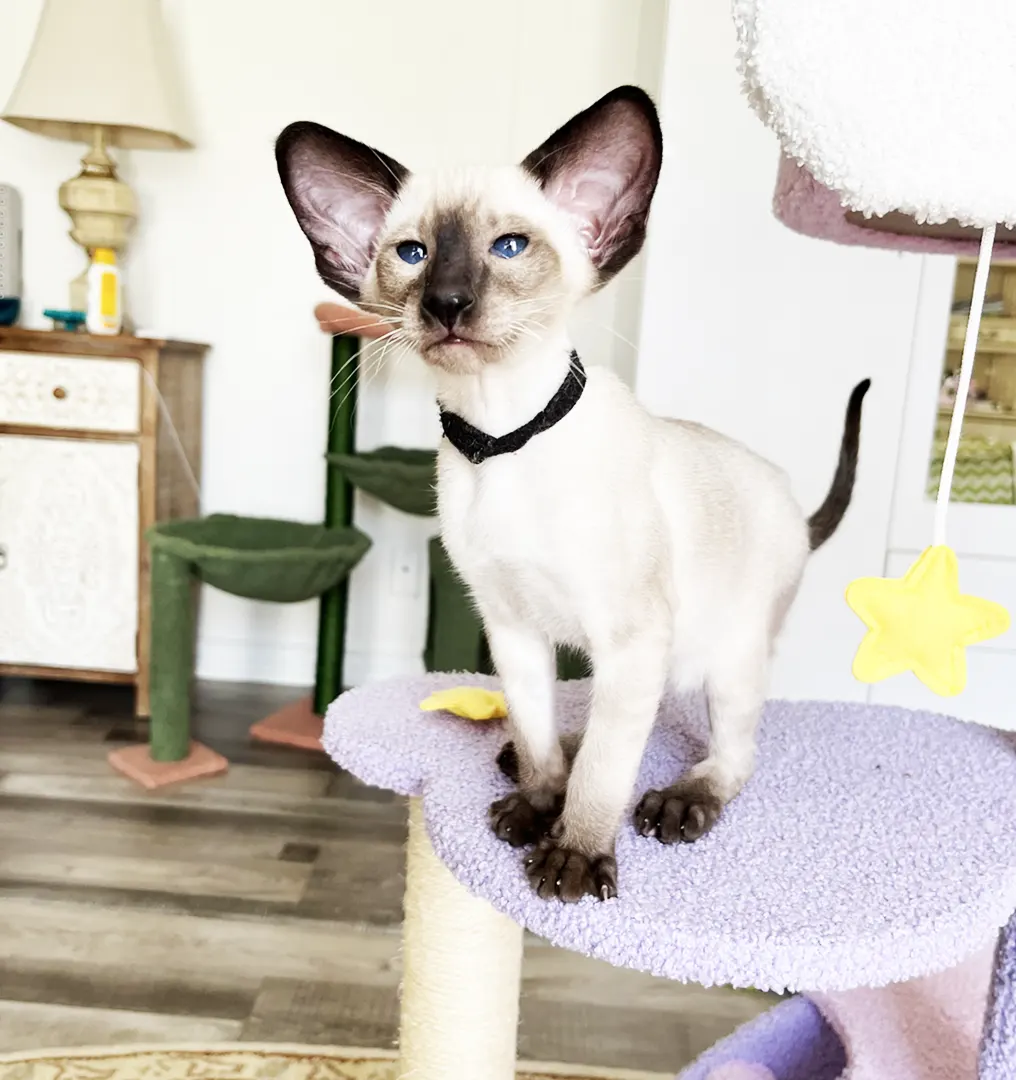There are several options available for shipping kittens to their new homes.
Bringing a new kitten into your home is an adventure like no other. It's a journey filled with excitement, cuddles, and, yes, a few challenges along the way. But fear not! Whether you're a seasoned cat parent or just starting out, this guide is here to help you navigate the ins and outs of kitten care with confidence and joy.
From preparing your home for your new furry friend to fostering a lifelong bond, I'll cover it all. So buckle up and get ready for a heartwarming ride filled with love, laughter, and plenty of purrs!
Optimal Age for Bringing Kitten Home
Separating a kitten from its mother and siblings too early can have negative consequences on its physical and emotional development. The optimal age for a kitten to leave its mother and siblings typically begins after 3.5 months. By this age, reputable breeders ensure that the kitten has completed a full course of vaccinations, testing, and necessary procedures. Additionally, the kitten learns essential skills from its mother, such as using the litter box and socialization with other cats and people. This period also allows for proper imprinting and natural separation from the mother and littermates.

Please never rush the process and respect the timeline set by the breeder. Rushing to take a kitten home prematurely can disrupt its development and potentially lead to behavioral issues later on. Under the guidelines of TICA (The International Cat Association), kittens are not to leave the cattery before 12 weeks of age, but it's preferable for them to depart after reaching 14 weeks. It has long been observed that people tend to prefer selecting younger kittens, believing that a cat at 6-7 months old is already an adult cat. By the way, a cat is considered a kitten until the age of 12 months.
Safe and Stress-Free Kitten Transport Options
Transporting your new kitten requires careful consideration. You have several options: picking up the kitten yourself from the breeder and driving it home, having a pet nanny deliver it to the nearest airport for you to collect and drive home, or receiving it as cargo at the airport and then transporting it home by car. Regardless of the method, remember that the kitten is unfamiliar with you. It hasn't encountered your scent or heard your voice before. It's wise to refrain from quickly removing the kitten from its carrier upon arrival. The transition can be stressful for the kitten, who doesn't know what to expect from a stranger. Despite speaking softly and handling the kitten gently, it may still experience stress from the unfamiliar situation.
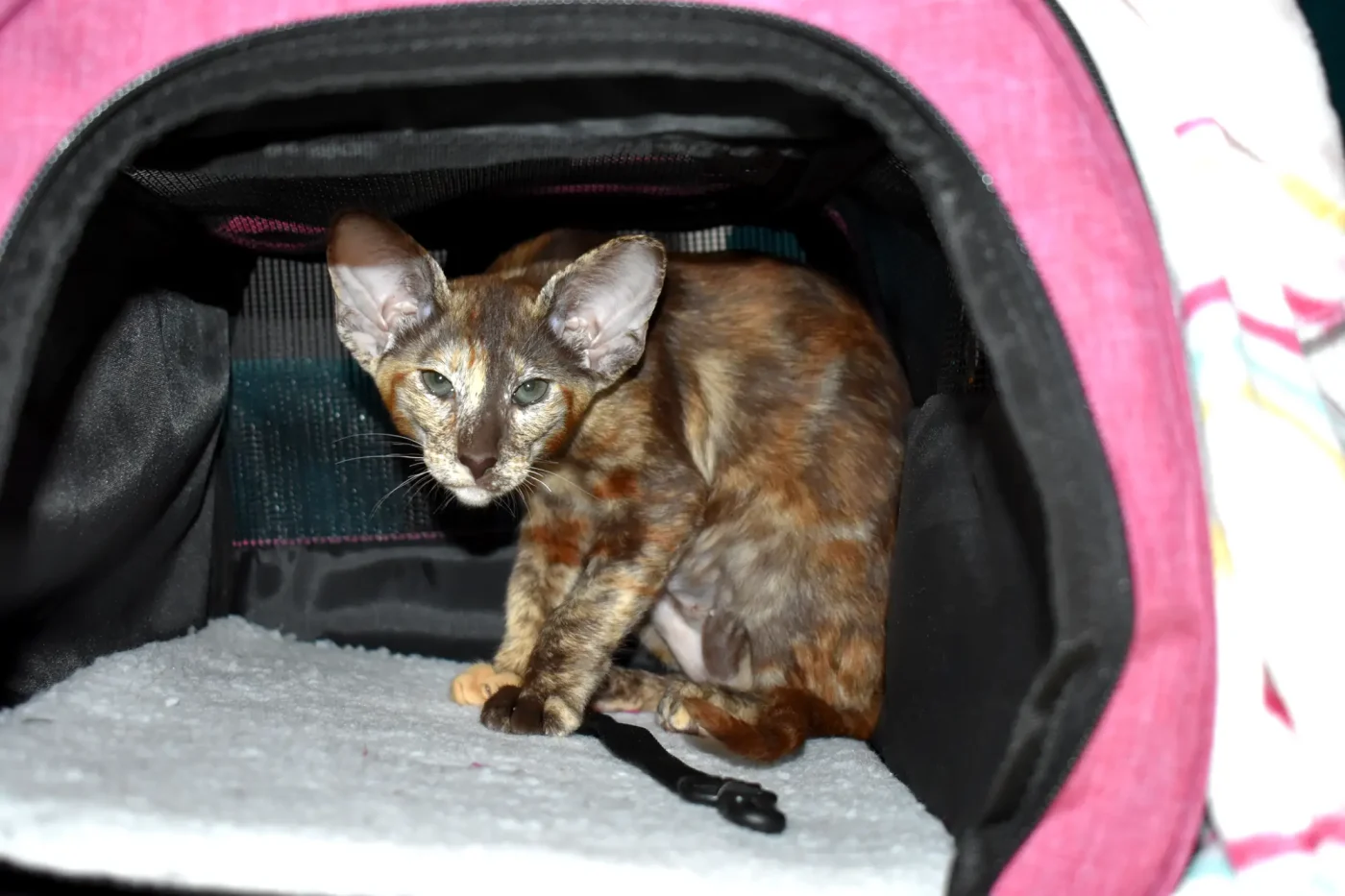
Allow the kitten some time to acclimate before attempting to interact with it outside of its carrier. Keep in mind that after the journey, the kitten may experience motion sickness. One of the signs that the kitten is feeling nauseous is excessive drooling.
Check out my article on kitten transportation for all the deets on safely moving your new furry buddy!
Creating a Safe Haven for Your New Kitten
It's important to limit your kitten's movements to one room initially. This will help it not to get lost in the new space, and you won't have to retrieve it from under the fridge or in the closet. Choose a small, quiet, non-passageway room and set up a litter box, toys, food and water, and a scratching post for the kitten. Leave the carrier in which the kitten arrived open in the room.

The kitten will likely hide there during the first few days. During this time, it's better to let the kitten understand that it can trust you and that you won't forcibly handle it. This is particularly important for families with children. I know that parents often allow children to play with the kittens from the first hours and then turn to the breeder the same evening because the kitten shows signs of stress such as hiding under furniture, hissing, showing aggression, drooling, trembling with fear, refusing to eat, and not using the litter box. To avoid all these stress-related symptoms, please allow the kitten to acclimate to the new home at its own pace. It's important not to chase or force interaction with the kitten. Allow the kitten to retreat to its safe space at its first inclination. If you show that you can be trusted, the kitten will soon seek out contact with you on its own. Don't rush things. Your patience and calmness are key to building a strong relationship with your kitten.
Try to avoid noise from electrical appliances such as vacuum cleaners, hair dryers, and others. Ensure that there are no easily breakable items in the room (photo frames, vases, figurines), no plants that the kitten could chew on and induce vomiting. Also, check the list of toxic plants in your home to ensure there are no potentially hazardous ones for cats. Remove all small items such as beads, small pieces of building sets, mosaics, and tiny toys that the kitten could swallow. Refrain from using air fresheners (candles, wax melts, sprays, etc.). Avoid rubbing cat belongings in strongly scented detergent and refrain from using aroma boosters. Pay attention to what you use to clean the floors. All cleaning agents leave behind a thin film as they dry. Keep in mind that cats walk on the floor and then lick their paw pads. Remove all cords that the kitten could chew on and risk getting electrocuted. Pretend that you are child-proofing the place for a 2-year-old!
Optimal Diet Transition Strategy
The well-being of the kitten needs to continue feeding it its familiar food and not make any changes to its diet. Human food should not be given. Even introducing new water can be a significant factor in changing the kitten's diet. If you are picking up the kitten directly from the breeder's home, you'll usually be provided with a small amount of the food the kitten is accustomed to. However, if you're receiving the kitten through a pet nanny or cargo air delivery, according to airline regulations, only a small packet of dry food can be provided with the kitten. In this case, you should receive a list from the breeder in advance of what you need to purchase for the kitten. In our cattery, I provide a detailed list along with links to dry food, canned food, bowls, litter boxes, litter, toys, scratching posts, and more.
Avoid overfeeding your kitten. Overfeeding is a common cause of digestive issues. Follow the recommendations of the breeders and use common sense.
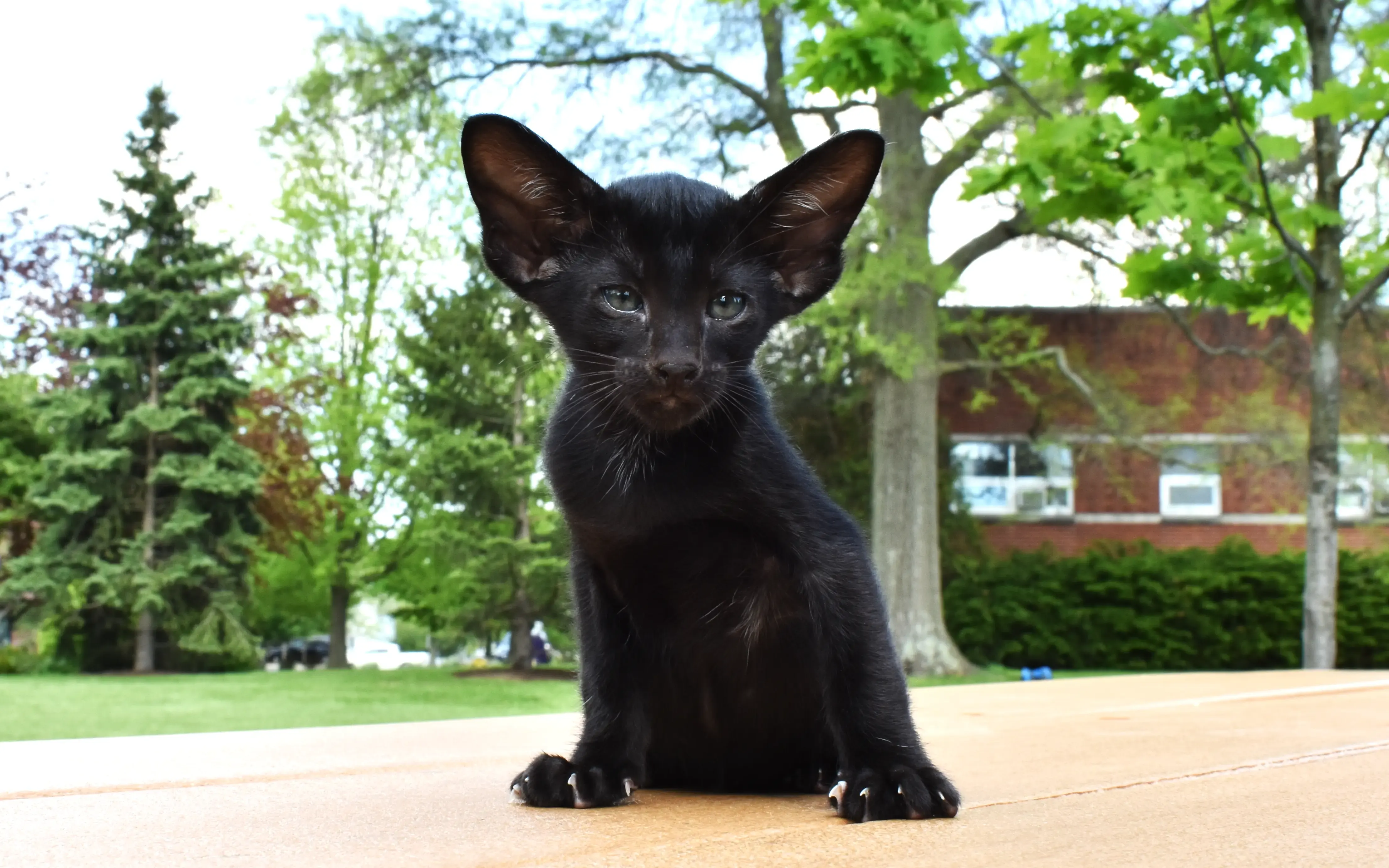
During the first three to four weeks, strictly follow the breeder's recommendations regarding feeding schedule. Also, keep in mind that all kittens are different, and even if the kitten has been fed a particular food for the first three to four months of its life, it doesn't necessarily mean that this food is ideal for it. Some kittens may show signs of allergies or intolerance to certain foods over time, and sometimes, food manufacturers change their raw material suppliers or processing methods, causing the kitten's body to reject such food. In this case, your task is to find the food that best suits your specific kitten. However, remember that transitioning to a new food should be gradual. Over a period of 10 days, gradually introduce the new food alongside the familiar one, increasing the proportion of the new food gradually.
Choosing the Right Litter for Kitten Adjustment
Another pressing issue concerns the litter box. To avoid unpleasant situations, use the same litter that the kitten used at the breeder's. I've had to deal with stubborn owners who wanted to do things their own way and instead of the litter I recommended, they bought what they found online. As a result, the kitten relieved itself in inappropriate places. Cats primarily go by smell, so when a kitten arrives at your place and finds a freshly bought litter box with different litter, it's very difficult for it to understand where the right place for the toilet is. And if you use a different litter, the kitten could be confused.
In our cattery, we use wooden pellets for adult cats and paper pellets for kittens. I consider this litter the safest for cats. Kittens run and play a lot, and often jump into their litter boxes with momentum, and paper pellets help prevent litter scattered around the box. When you personally pick up a kitten from our home, I always provide a little used litter in a bag so you can add it to your litter box, which will help the kitten orient itself in the new place. Unfortunately, such aromatic packets are not allowed during air transportation.
After a couple of months, once the kitten has fully settled into your home, you can use any litter that suits your lifestyle.
Introducing the Kitten to Other Pets
Introducing the kitten to other pets requires patience and careful planning to ensure a smooth transition. It's essential to supervise all interactions between your new kitten and existing pets, especially during the initial introduction period. Start by allowing them to sniff each other through a door or gate, gradually increasing their exposure to one another while keeping a close eye on their behavior. Monitor for signs of aggression or fear and be prepared to separate them if necessary. Provide separate food and water dishes, as well as litter boxes, to prevent competition and reduce stress.
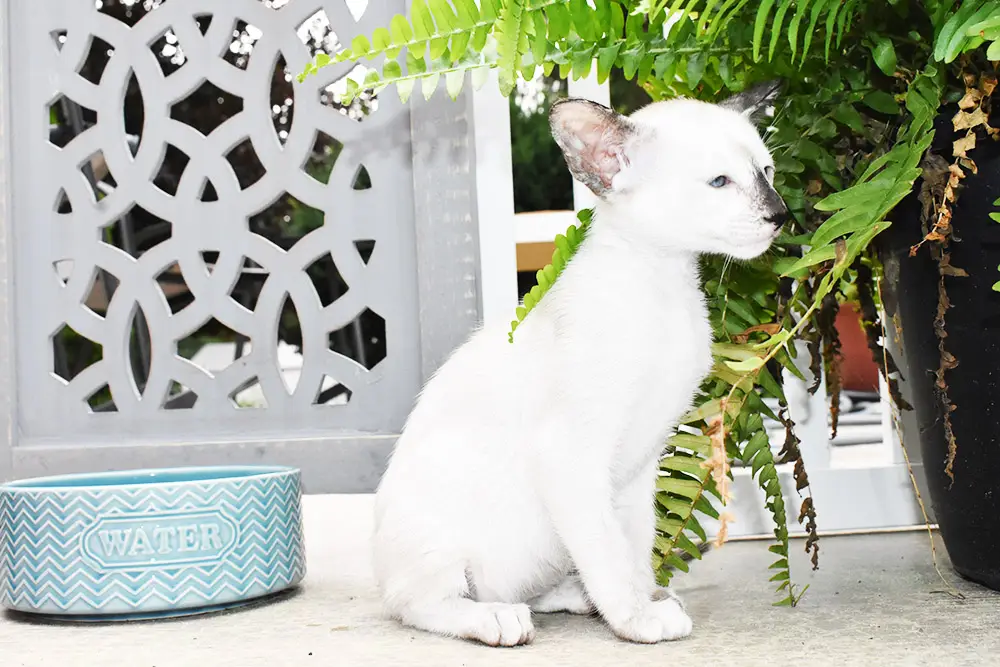
Over time, with positive reinforcement and gradual exposure, your pets should learn to coexist peacefully. Remember to praise and reward good behavior and seek guidance from a veterinarian or animal behaviorist if needed.
If we are talking about two cats, they primarily compete for resources. These resources include food, water, territory, sleeping space, toys, and even your attention. When cats realize that the presence of another resident does not threaten their well-being, they are more likely to accept the newcomer. Of course, we are referring to neutered/spayed cats, as they do not have the need to dominate or establish hierarchies.
I want to emphasize the importance of introducing the kitten to the dog with great care. In our practice, there was a case where the kitten was immediately introduced to the dog upon arrival in the new home. The dog naturally jumped and barked out of joy. As a result, the owner ended up with scratched hands and disappointment. The kitten experienced psychological trauma. Therefore, please, be mature and responsible, consider the consequences of your actions carefully.
Preparing Your Home and Family for the Kitten Arrival
You should schedule an appointment with your veterinarian in advance to visit within the first 72 hours of receiving your kitten. Provide your veterinarian with all the records received from the breeder. In our cattery, each kitten comes with a folder containing veterinary records of three rounds of FVRCP vaccination, rabies vaccination, test results for feline leukemia and feline immunodeficiency, fecal parasite test, and spaying/neutering records.
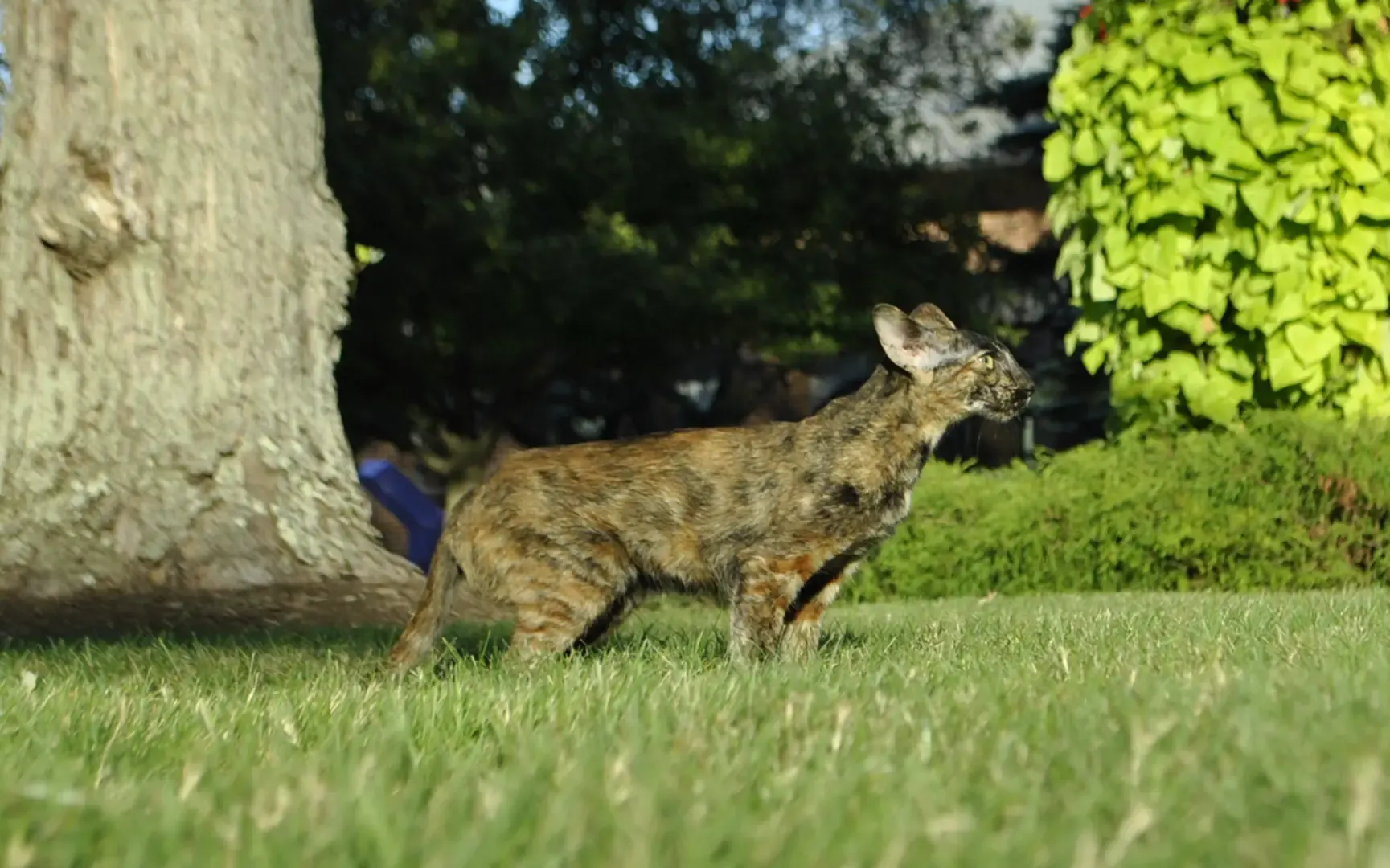
Additionally, you can consider using plug-in pheromone diffusers to help your kitten feel more secure in their new environment. These diffusers release synthetic pheromones that mimic those produced by a mother cat, helping to reduce stress and promote a sense of calm. Follow the instructions provided with the product for optimal results.
It's a good idea to have litter attractant on hand, just in case your kitten needs a little extra encouragement to use its litter box. Litter attractants are specially formulated to attract kittens to their litter box, making it easier for them to establish good bathroom habits in their new home.
Discuss with your children in advance how to properly interact with the kitten. Highlight the importance of being gentle and respectful towards the kitten, and explain that they should never be left unsupervised with the kitten to avoid any potential mishaps or accidents.
If you reside within a Homeowners Association (HOA), it's imperative to familiarize yourself with the regulations governing pet ownership within the community. Many HOAs have specific guidelines regarding the keeping of pets, including cats, within their jurisdiction. It's essential to acquaint yourself with these rules and obtain any necessary permissions or permits from the landlord or governing body before bringing a kitten into your home. By adhering to these protocols, you ensure a harmonious living environment for both yourself and your new feline companion, fostering a sense of mutual respect and cooperation within the community.
Oriental and Siamese cats generally do not require regular bathing due to their self-grooming habits and low-maintenance coats. However, if bathing becomes necessary for any reason, avoid using human shampoo. Human shampoos often contain additives and fragrances that can be toxic to cats, potentially leading to poisoning and fatal outcomes. Instead, opt for a mild cat-specific shampoo recommended by veterinarians, which is formulated to be safe for feline skin and free from harmful ingredients. Always follow the instructions provided with the shampoo and ensure thorough rinsing to prevent skin irritation and discomfort for your kitten.
Ensure the safety of your kitten/cat by not allowing them outside except on a leash (under close supervision) or in a completely enclosed run.
Unforeseen Events and Challenges With Your New Kitten
Around the age of 4 months, kittens begin to experience changes akin to those in human infants. Their teeth start to fall out, their immunity decreases, and they may have bad breath, soft stool, and a slight temperature. Don't be alarmed if you notice two canines growing next to each other; it's a natural process. Cats are predators, and in the wild, they cannot survive without their canines. Initially, the permanent canines grow roots, and then the milk teeth fall out. The situation is different with the molar teeth; they fall out, and the gums may bleed for a while, causing an unpleasant odor from the kitten's mouth. Generally, the complete transition of all teeth is usually completed by around 8 months of age.
You'd be surprised how many times I've been contacted by concerned owners who found milk teeth on the floor… And one owner went even further! She was outraged to discover pimples on her kitten's belly and chest, which she mistook for nipples… She couldn't fathom that males also have nipples.
Take note that the eyes of Siamese kittens are highly sensitive to bright light. This sensitivity is a result of their genetic makeup, which causes their irises to be less able to protect their eyes from excessive brightness. As a result, Siamese kittens may squint or avoid direct sunlight to reduce discomfort. Please provide ample shade and limit exposure to harsh sunlight to ensure their eyes remain healthy and comfortable especially during outdoor activities or when traveling.
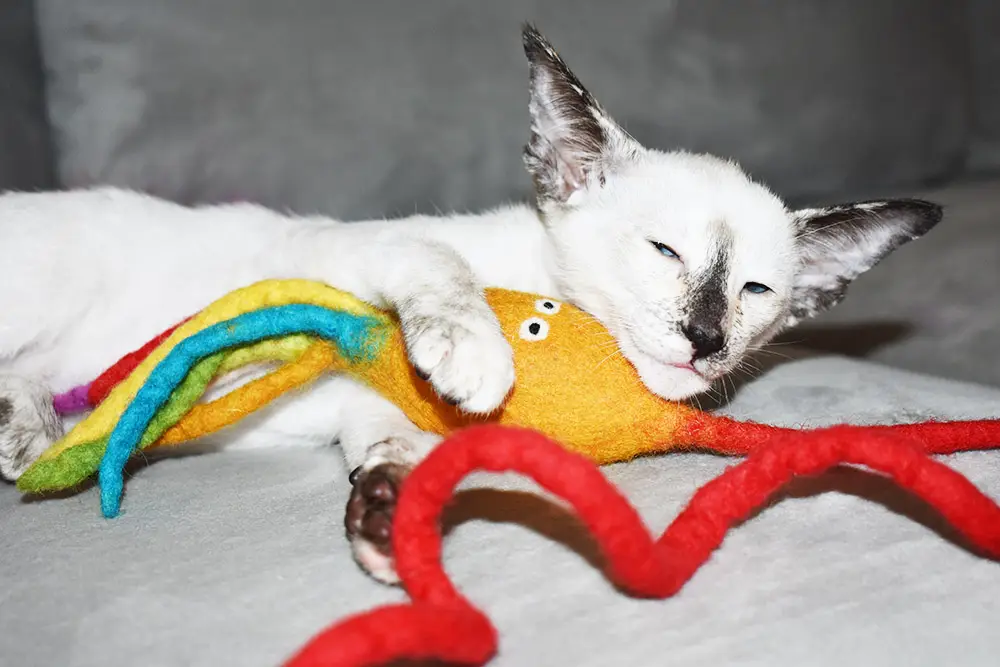
Here I want also to mention the peculiar feature of Siamese kittens changing their shade depending on the ambient temperature. Acromelanism, or the coloration of Siamese cats, is thermosensitive and reacts by changing the pigment saturation at cooler temperatures. The points on the muzzle, paws, and tail are a bright manifestation of such thermosensitivity. The points are the coldest spots on the cat's body. So don't be surprised if your Siamese kitten's fur changes its shade after a few weeks.
It's possible that you're aware of the talkative nature of Siamese and Oriental cats, but it may still surprise you just how vocal they can be. Some of them meow loudly even when they catch your gaze. It's true that Orientals and Siamese are deeply attached to people and tend to shadow them closely.
Therefore, I want to warn you about another danger: doors! Very often, a kitten follows its owner and ends up getting caught by a closing door! Such door-related incidents can lead to serious injuries, such as crushed paws or tails, and may even result in suffocation. If a kitten gets caught in a closing door, it can lead to severe consequences, including internal injuries that may not be immediately visible. Even though the kitten may appear unharmed initially, the incident can cause long-term health issues as its internal organs may develop improperly over time.
During the first few nights, kittens may plaintively meow and disrupt your sleep. Please be understanding of the little one's feelings and show sympathy and patience. If you live in an apartment and are concerned that neighbors may hear the meowing and be displeased, inform them in advance that a small kitten will be joining you and about the possible scenario unfolding.
In Conclusion
Remember, each kitten is unique, and their adjustment to a new environment can vary. Some kittens may adapt quickly to their new surroundings, while others may require more time and patience. Signs a kitten is settling in include purring, playing, eating regularly, and using the litter box consistently. With love, care, and attention, your new kitten will thrive and bring joy to your household for years to come.
To wrap up, those are all the points I wanted to address before you welcome a kitten into your home. These same recommendations apply to adult cats who are moving in with you as well.
Welcome to the wonderful world of cat parenthood!


